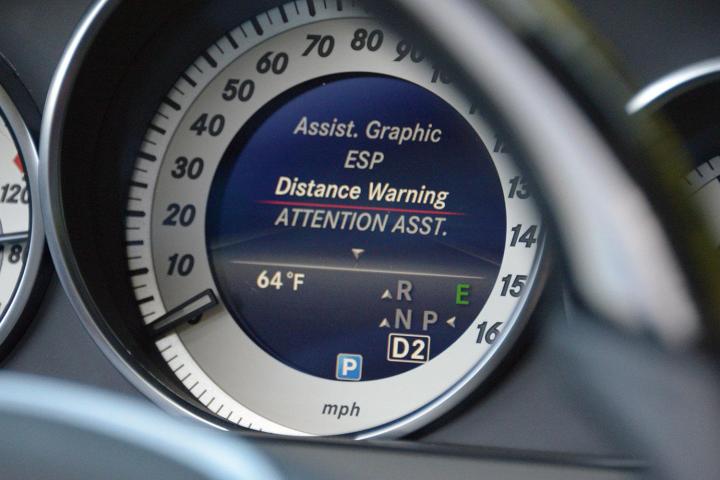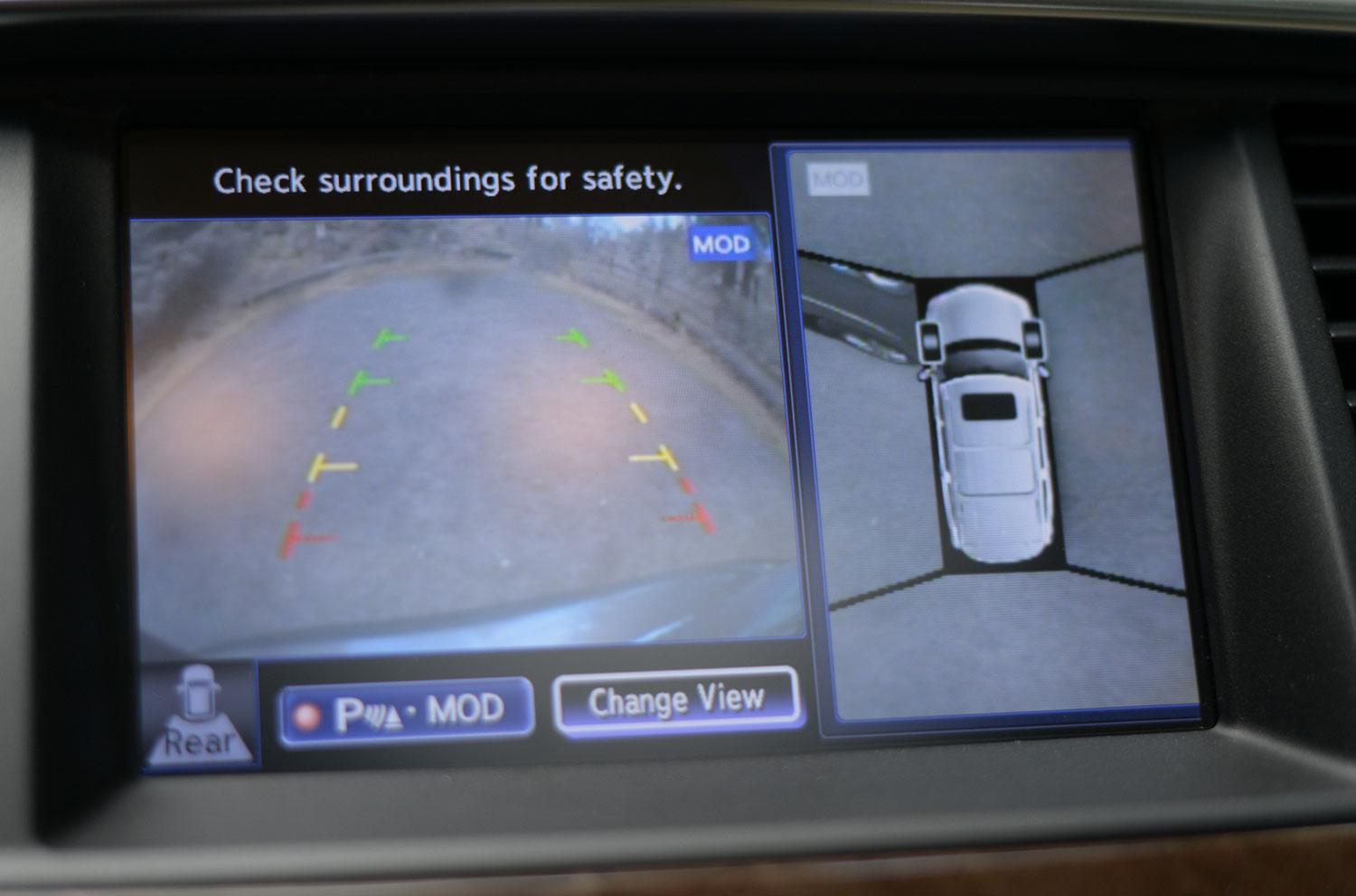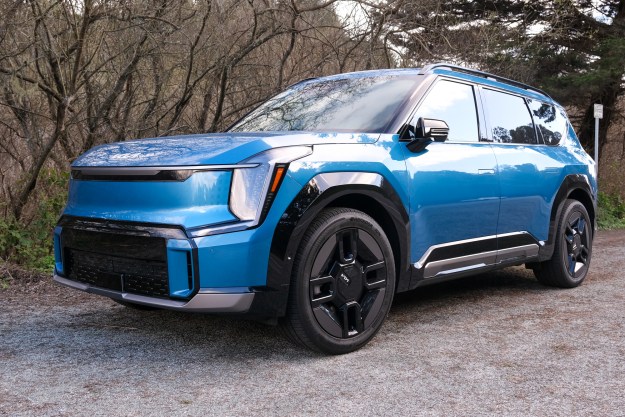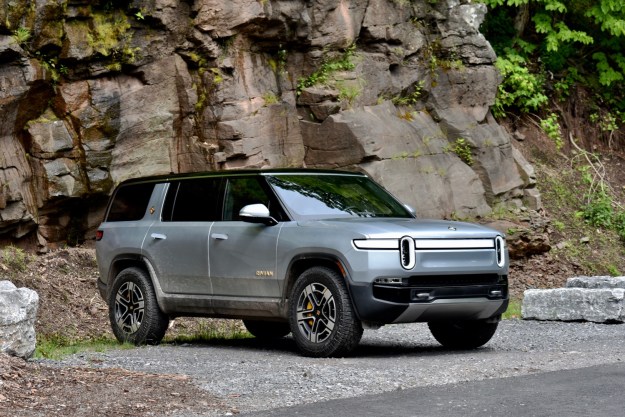
Infiniti and Mercedes-Benz are considered heavyweights of the luxury car world, and rightfully so. But beyond a penchant for performance and elegance, both brands are famous for their progressive safety technologies, which are designed to keep drivers protected from others and quite often themselves as well. For the true techie, though, which system is superior? Is Mercedes-Benz’s Intelligent Drive the smart choice or is Infiniti’s Safety Shield better equipped to guard you from harm? Let’s compare.
Infiniti’s Safety Shield
For Infiniti, “Safety Shield” all begins with DCA, which stands for Distance Control Assist. It allows whatever model it’s installed in to operate with very little driver input, and is much more hands-off than you’d expect. A simple press of a button located on the steering wheel is all it takes for the system to spring to life.
In traffic situations – light or heavy – DCA regulates speed autonomously; that is to say, all on its own. Approach a vehicle too closely and DCA kicks to slow the car down. An onboard computer calculates vehicle speed, distance to a vehicle ahead, and closing speed between you and the vehicle ahead in order to determine whether a collision is likely.
If a collision is deemed probable, a physical warning is fed through the gas pedal. Here, a computer controls a motor in the pedal assembly that actually nudges against your foot, warning you to let off and apply the brake. Once your foot lets off the throttle, the brakes are automatically applied.
What is perhaps most trippy is the fact that you can actually see the brake pedal depress, almost as if a phantom were behind the wheel! But instead of ghosts, DCA utilizes a number of radar sensors and wide-angle cameras located around the car.
A front facing camera scans the road along with radar sensors positioned at the front and rear bumpers. These cameras and sensors detect cars ahead and enable the system to react. Drivers can choose between different following distances whenever Infiniti’s Intelligent Cruise Control (ICC) is engaged. And DCA is even capable enough to bring the car to a complete stop if need be.
…what makes Safety Shield such a treat is that you hardly realize it’s there.
Instead of lifting off the gas and applying the brake, all you have to do is lift off the gas and DCA handles the rest. While the system can bring the vehicle to a complete stop; it will only do so for a limited amount of time before the car lets out a warning chime and starts moving again.
A couple of caveats to consider: DCA only detects cars (for now at least), meaning pedestrians, stop signs, and red lights require that you actually pay attention, and manually apply the brakes when necessary.
Another thing to consider is that the system only works above 3 mph, so if you’re crawling along in traffic any slower than that, it won’t do you much good, which is odd since that seems to be a speed where it could be very effective in stuck freeway traffic and other stop-and-go scenarios.
Still, DCA is an intuitive and user-friendly feature. It doesn’t require multiple shuffles through your driver’s manual and it can literally operate with the press of a single button. Remember: lots of tech is good but less buttons to operate that tech is better.

My only real quarrel with DCA is that the calibration seems a little awkward. During my drives of the JX35 and QX56 – two models that offer DCA as an option – braking was often activated prematurely and there were other instances where it seemed to take too long to kick in altogether.
Safety Shield doesn’t get you living the autonomous dream but it does come close. Lane Departure Warning (LDW) and Lane Departure Prevention (LDP) help keep you in your lane; the former belts out and audible warning while the latter automatically applies the brakes and steers you back on course if you start to veer off.
Blind Spot Intervention (BSI) and Blind Spot Warning (BSW) work similarly to LDW and LDP. Radar sensors placed on each side of the vehicle alert the driver when another car enters a blind spot by flashing an indicator light on either side of the cabin. If you ignore the warning and attempt a lane change, the system will flash and beep at you. Ignore that and BSI kicks in, applying the brakes to the opposite side of the car in an effort to pull you back in the lane.
Safety Shield also packs in a very good Around View Monitor, which is Infiniti’s way of marketing its 360 degree birds-eye view camera system. While not as techie as some of the other safety tech Audi offers, AVM helps immensely with parallel parking and maneuvering in tight spaces, especially in larger SUVs like the JX and QX.
Rounding out Safety Shield’s plethora of safety tech is a Backup Collision Intervention (BCI). Say you’re sitting in a parking lot, blocked by cars on each side. Instead of slowly backing out of your space and hoping/praying others cars see you, BCI monitors cross traffic at the rear and will automatically apply the brakes if a collision danger is detected.
I’m sure Safety Shield sounds rather daunting, and it can be for a new driver unaccustomed to everything is has to offer. But what makes Safety Shield such a treat is that you hardly realize it’s there. It just sort of works and, dare I say, shields you from having to deal with some everyday driving dangers and frustrations.
Mercedes Benz Intelligent Drive
Mercedes’ calls its safety suite “Intelligent Drive” and the name couldn’t be more appropriate. It’s a smart little system that is similar to Safety Shield in a number of ways, with a few key differences sprinkled in.
The Mercedes 2014 E-Class launch was my most recent experience with the system, with previous exposure limited to the GL and the SL. The E-Class offers the most advanced version of Intelligent Drive and kicks things up a notch by adding stereoscopic cameras alongside an already impressive number of radar sensors.
At the center of Mercedes’ tech ring is Distronic Plus (DP). Instead of a single button press on the steering console a la Infiniti’s DCA, Distronic Plus switches on via an inconveniently located tiny stalk found behind and to the left of the steering wheel.
Distronic Plus behaves similarly to most familair automated cruise control system. Flick the stalk and the car chugs along at the same pace it would if your foot was on the gas, although you need to be going above 20 mph for it to work.
In traffic, DP uses radars placed at the front of the car to detect other vehicles and match their pace while keeping a safe distance between themselves and the car ahead. Drivers can choose a desired following distance, and Mercedes’ system, like Infiniti’s DCA, is even capable of coming to a complete stop all on its own.
Distronic Plus eclipses DCA, though, by adding a brand-new Steering Assist feature, which provides automatic steering adjustments on the road. You can actually take your hands completely off the wheel and let the car steer itself on roads with lane markings that are clearly visible. The system isn’t designed to function that way though, which is why after about 10 seconds or so, the car detects that your hands are off the wheel and flashes a graphic in the LCD cluster reminding you to resume steering duties.

In short bursts, Steering Assist makes you feel like the car is driving without your help – because it is. That makes it sound a little more advanced than DCA but it’s actually less so because Distronic Plus needs to be switched on in order for Steering Assist and automated braking to work. DCA, on the other hand, is free of any cruise control system and lane markings; it just works so long as it’s switched on. And unlike Distronic Plus, which needs to be going at least 20 mph, DCA can operate at speeds as low as 3 mph.
However, only Distronic Plus is capable of keeping the vehicle stopped, and will not start to move the car again unless the driver re-engages it by tapping the gas pedal – giving it a slight advantage in terms of driver control.
But here’s where it gets interesting. Whereas Infiniti’s tech package can only detect other cars, Mercedes’s Intelligent Drive suite has the edge by virtue of being able to detect pedestrians and cyclists as well – courtesy of those two fancy stereoscopic cameras placed behind the rear view mirror.
At a cross walk, for example, the car can autonomously slam on the brakes a split second before crashing into a pedestrian or warn the driver of a potential collision and apply the necessary level of braking as soon as the driver steps on the brake pedal.
While Infiniti’s Safety Shield is incredibly capable, Mercedes’ Intelligent Drive offers a more comprehensive package.
Mercedes doesn’t like to be shown up by anyone, which is why the latest version of its Active Lane Assist not only keeps the car planted in the middle of the lane but also detects oncoming traffic. It can prevent collisions by applying the brakes to one side of the vehicle and bringing it back into its lane even if an oncoming car is not separated by a solid lane marker.
Like Infiniti, Mercedes also has its own 360-degree camera system called, descriptively, Surround View Camera (SVC). It covers all four sides of the car and provides an excellent birds-eye perspective that makes parking and maneuvering through tight spaces a breeze. Infiniti’s AVM and Mercedes’ SVC are near identical so neither is superior over the other.
However, models equipped with Intelligent Drive also include Active Parking Assist (APA). APA automates parallel parking through the use of ultrasonic sensors. These sensors scan for open parking spaces on either side of the car, and once a spot is identified, can park your Mercedes for you.
Around the back, both systems are equally adept at spotting cross traffic you can’t see. They can detect vehicles crossing from behind and apply braking automatically to avoid being side-swiped while backing out of a parking space.
Mercedes’ has Infiniti beat though with a somewhat Orwellian safety system called Attention Assist that continuously monitors 70 different parameters to measure your levels of alertness, warning you with an audible and visual warning if it detects elevated levels of drowsiness. Attention Assist might not sound like a killer feature, but it’s pretty handy for drivers that commute long distances for hours on end.
And finally, Intelligent Drive features Mercedes’ Pre Safe technology that tries to protect occupants the moment before a collision by tightening front seatbelts, adjusting the front passenger seat, and closing the car’s windows and sunroof.
So which is better?
While Infiniti’s Safety Shield is incredibly capable, Mercedes’ Intelligent Drive offers a more comprehensive package.
Granted, some of Mercedes’ cooler features only work in specific situations, whereas Infiniti’s seem to be active in the background most of the time, requiring you to pay less attention to them. However, the sheer breadth of options available with Intelligent Drive, with more obvious features like Steering Assist able to drive the car on its own (however briefly that may be), and Mercedes’ collision detection hardware being able to detect more than just cars, give Intelligent Drive an edge over Infiniti in the automated car tech arms race.
What’s your take on automated safety systems? Worthwhile or are drum brakes and a rearview mirror enough for you?


